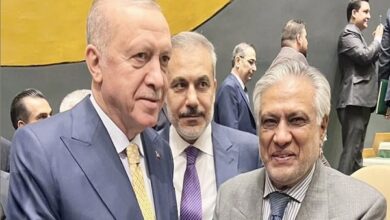INDIA’S NEFARIOUS DESIGNS IN INDIAN OCEAN IN THE CONTEXT OF SRI LANLA BOMBING
By Aurangzeb Alamgir
On 21st April, series of bombing ripped through different churches on Easter day. More than 300 people were killed and nearly 500 were injured including foreigners. Indian media outlets have associated the bombing with local extremist group National Tawheed Jamath (NTJ), which is an arm of Indian Tamil Nadu Tawheed Jamaath (TNTJ) and is equally active in USA, UK, Qatar, France and Australia. Although the organization did not involve in terror activities in past but it held demonstrations and protests across Tamil Nadu against demolition of Babri Masjid. Load shedding and for removal of liquor shops.
Along with it, according to various reports, which were later confirmed by Sri Lankan authorities, the series of bombing was planned in India. Tracing the history of terrorism in South Asia, the evidences prove that, it started from Sri Lanka in the decade of 1980s, once the Tamil’s insurgency against Sri Lankan government was at peak. The Liberation Tigers of Tamil Eelam (LTTE), a terrorist organization were considered to be the pioneers of the terrorism in South Asia. The conflict between Sri Lankan government and LTTE has lasted nearby three decades. It is on the record that LTTE was directly linked with RAW. And RAW was supporting LTTE under the larger Indra doctrine which had aim to destabilize India’s neighbourhood in order to maximize Indian sphere of influence.
If we analyse the facts about Sri Lanka, as per 2011 census 70%population is Sinhala Buddhist while in minority 12.6% are Hindus, 9.7 % are Muslims and 7.4% are Christians.
Buddhism is state religion but according to Sri Lankan constitution, followers of other religions are free to live according to their religious norms. Economically Sri Lanka is declared as fast growing markets in coming decades while Sri Lanka is important part of Chinese 21st century Maritime Silk Road. Because Sri Lanka’s prime location on main Indo-pacific sea lane of Communication (SLOC), most of the energy and goods travel near Sri Lankan coastal lines.
Sri Lanka’s status of emerging market and its prime geopolitical and geostrategic location makes it matter of concern for India. Chinese involvement in Indian Ocean is prioritized as a threat to Indian national security. The maritime domain remained one of the key focuses of PM Modi’s government. Modi regime not only reinvigorated India’s Look East Policy by transforming it in to the Act East policy, but also gave an outlook to decades long Indian aspirations of dominating the Indian Ocean. Dream of dominating Indian Ocean has continued to shape Indian maritime thinking that, as argued by David Scott.” Now India sees Indian Ocean as India’s Ocean”. Since the Indian Ocean is named after the subcontinent, India has already begun considering it as its own backyard. Under the naval doctrine of India, India has plans to increase its naval muscle.
According to reports till 2022, India has planned to add up around 160 ships, 40 major combatants and 400 aircrafts and 8 conventional and nuclear submarines. If India executes this plan, it will be defiantly dreadful for regional balance of power generally and for small states like Sri Lanka and Maldives especially. Indian nuclear submarines with the concept of “Sea Nuclear Deterrence” will create the security dilemma for all the states share coastal lines with Indian Ocean.
The policies of Modi are quite unsafe foe regional peace and stability. India is doing all doable covert and overt acts of terrorism and sabotage to maximize its sphere of influence in its neighbourhood. On one hand, India is increasing its conventional arsenals while on the other hand it is sponsoring terrorism in the region. Perhaps stability is not in the favour of India because so far India has not welcomed the regional connectivity projects like belt and road initiative. Rather it is involved to fail these kind of activities and evidence is in front of international community in the form of Kulbhushan Jadhav.





